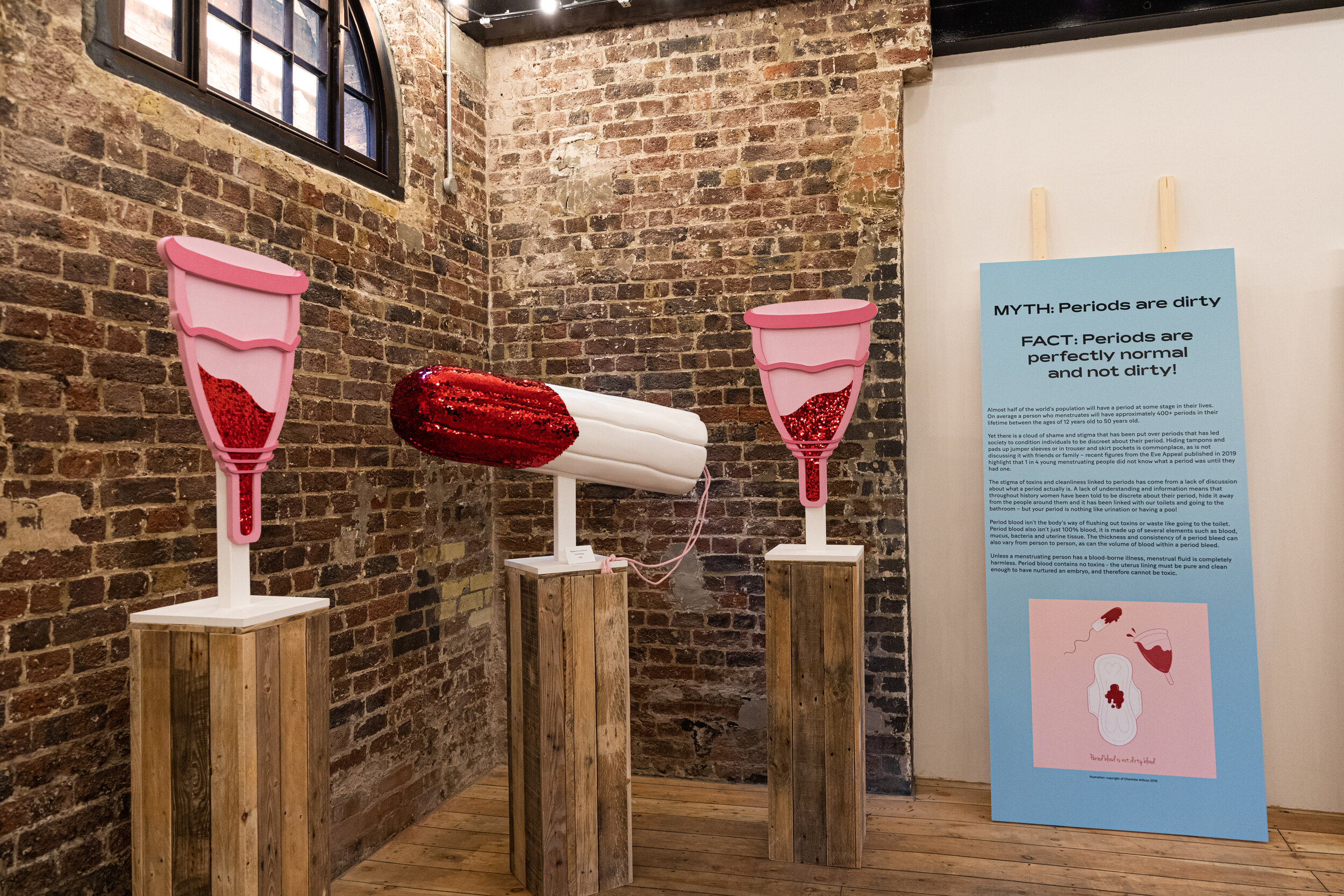Exhibition Review: Muff Busters at The Vagina Museum
Valeria Fernandez-Soriano reviews the new Vagina Museum at Camden and explores the myth-busting revelations about female anatomy.
Set amidst the bustling stalls and eateries of the Camden Stables Market, the Vagina Museum is rapidly developing into a presence concomitant with unconstrained frankness and empowerment. Ironically, it actually took me nearly an hour to find it, and not just because my phone had died (and I have a terrible sense of direction), but because I was apprehensive about even vocalising the name of the place I was looking for. Very self-aware of how readily I have absorbed taboos impeding basic levels of interaction, I realised, before stepping foot inside the Vagina Museum, how far this extended and shaped my understanding of my own anatomy. As the first space in the world specifically curated to educate and challenge preconceptions, it represents an age that is ripe with open and healthy discussion about gynaecology and sexual health. In fact, the founder Sarah Creed created the Vagina Museum in response to startling statistics about the widespread ignorance about the basic internal structure of female genitalia - 60% of women can’t label the vulva on an anatomical diagram.
Inside, the atmosphere is warm and welcoming; brightly coloured art courtesy of talented activists, glittery period product models, underwear in cases. Individuals, couples, even families contemplate the cross-sections, murmuring in surprise at the facts, scribbling them down. Conversation has been prompted, an aim fulfilled. It is striking to see typically-hushed topics such as cleanliness, the importance of pubic hair and period blood be discussed so openly, and hopefully it will transcend the walls of this safe space.
The exhibition draws attention to historical representations of the ‘ideal’ vagina, based on aesthetics intrinsically linked to morality and double standards for men and women, and carried through to mainstream pornography today. These values manifest as a display of vaginal products promising to ‘whiten’ and ‘tighten’, and school textbooks with a rhetoric threatening to seriously stunt the psychological and sexual development of young people. In 2015-16, more than 200 girls under 18 underwent labiaplasty on the NHS, a cosmetic surgery for the vagina, which many have argued is based on the misguided belief that vaginas are uniform, and anything that errs from the standard must be changed.
The use of myth busters throughout the exhibit effectively counters the miseducation passed down generations unchallenged, many of which personally resonated with me. To name a couple, there is the false belief that using a tampon will ‘take away your virginity,’ and is therefore to be strictly avoided in favour of pads. Again, these pervasive social constructs obscure the reality that what constitutes ‘loss of virginity’ is very subjective, and ultimately the hymen can be broken from merely riding a bike. The exhibition also tackles the belief that period blood is ‘dirty’ blood, and therefore those menstruating are unclean and impure. This contributes to a feeling of shame associated with periods, imposing additional pressure on young people already undergoing many other physical changes, to also be discreet and not ‘overshare’. In many cultures, menstruating women are shunned and isolated during their time of the month.
I also noticed the effort to challenge hetero and cis-normativity, for which an emphasis on the difference between sex and gender can literally save lives – a message particularly powerful in the context of Trans Awareness Week. The Museum’s talented curators have clearly set out to create an inclusive programme, with the spectrum of identity at the forefront. They not only rebuke the generalisation that only women can get periods or have a vagina, but they avoid as much as possible gender specific pronouns that would play into the prevailing narrative of binary identity. Validating the intersex community is part of their commitment to create a space of “integration, not segregation.”
The experience was positive and informative, with a manner that is detailed yet accessible, and an ability to engage different audiences. The Museum also hosts regular events, such as a feminist book club, gynaecology-themed quiz nights and socials. This is not something to be missed, whether you have a vulva or not, and actively making steps to inform ourselves about basic anatomy will only give future generations clarity and confidence, finally dispelling beliefs that have perpetuated feelings of shame and confusion. For those interested in a membership, ask at reception to be a member of the cleverly named ‘Cliterati’. With enough support and interest, the project hopes to expand into a larger space, with more comprehensive displays and larger events.
Muff Busters: Vagina Myths and How To Fight Them is on at The Vagina Museum until 28th February 2020. Entry is free for all.


